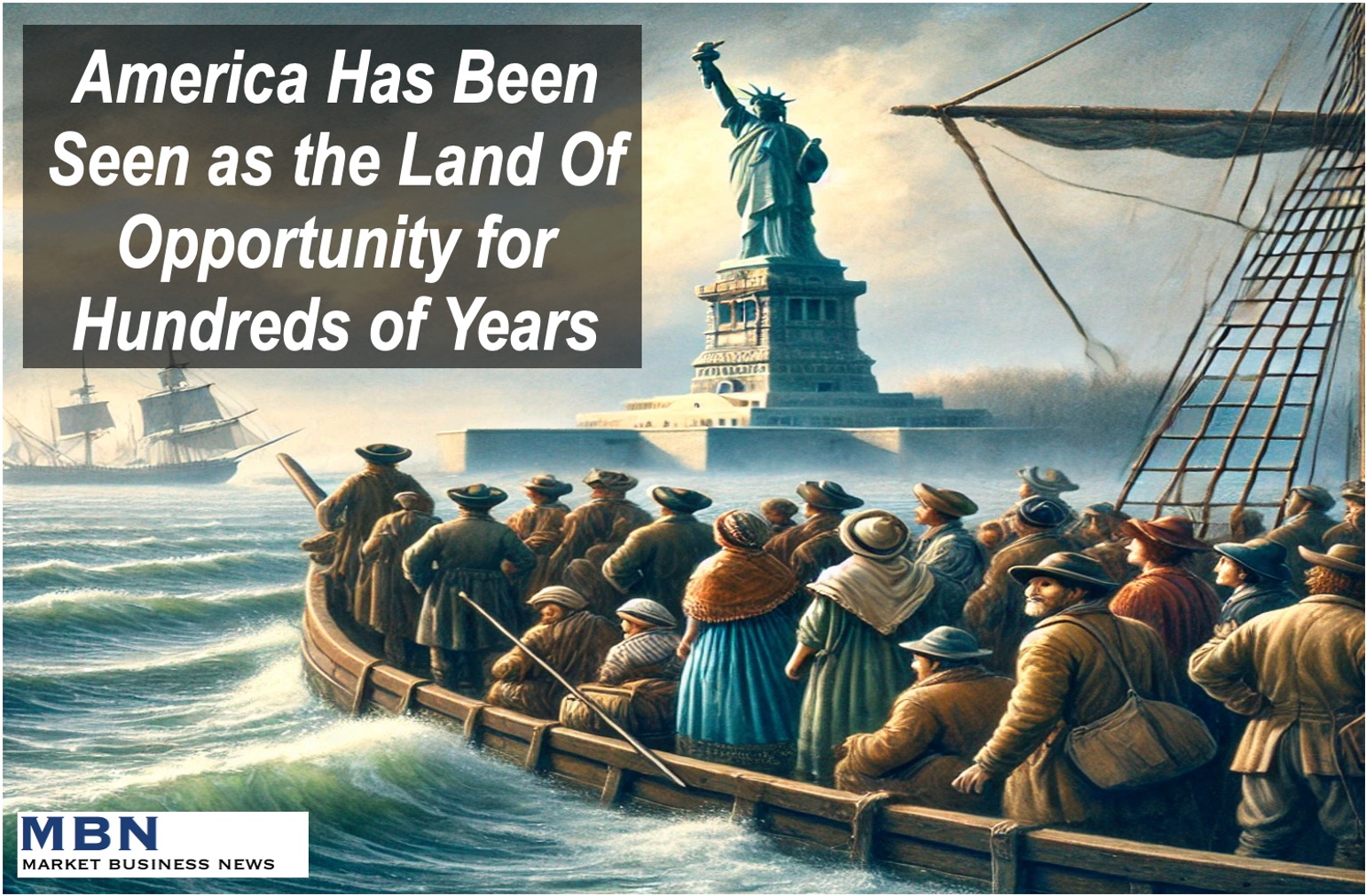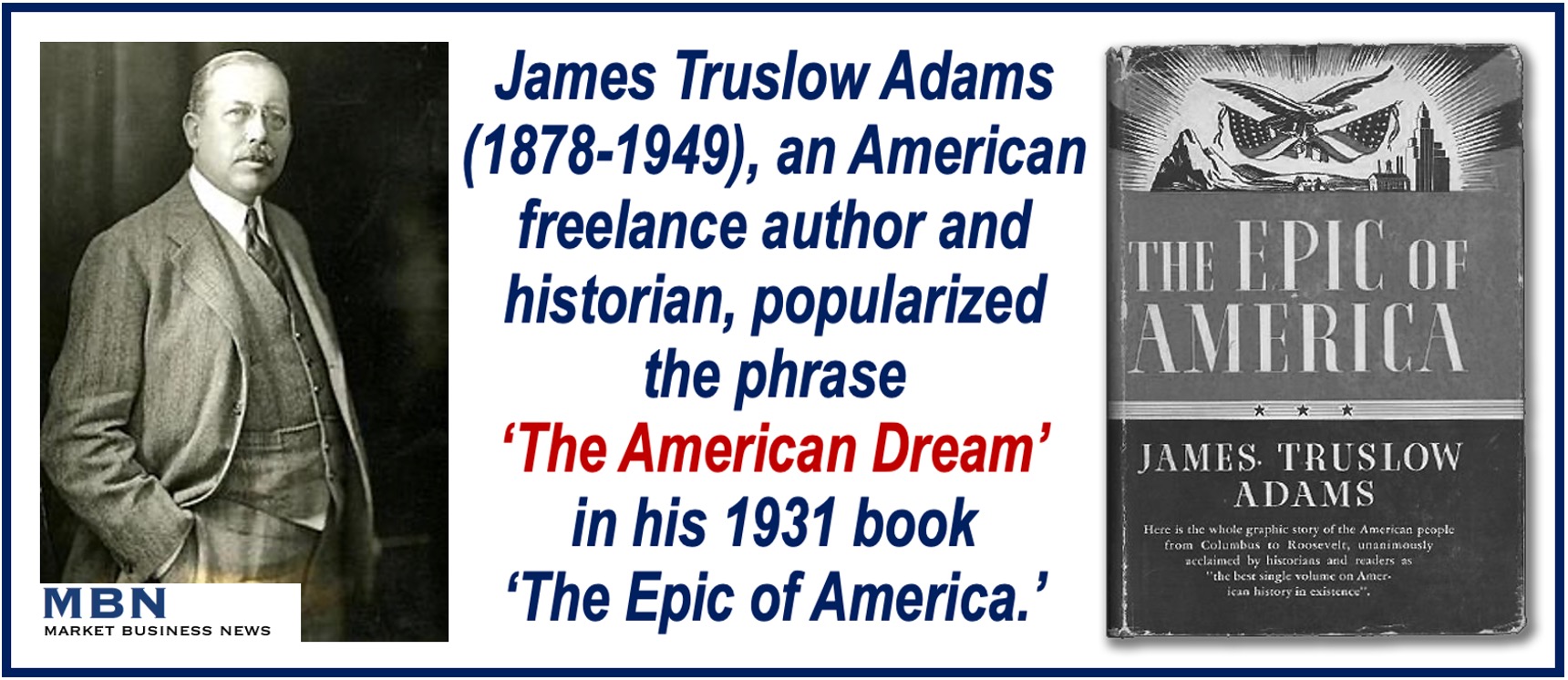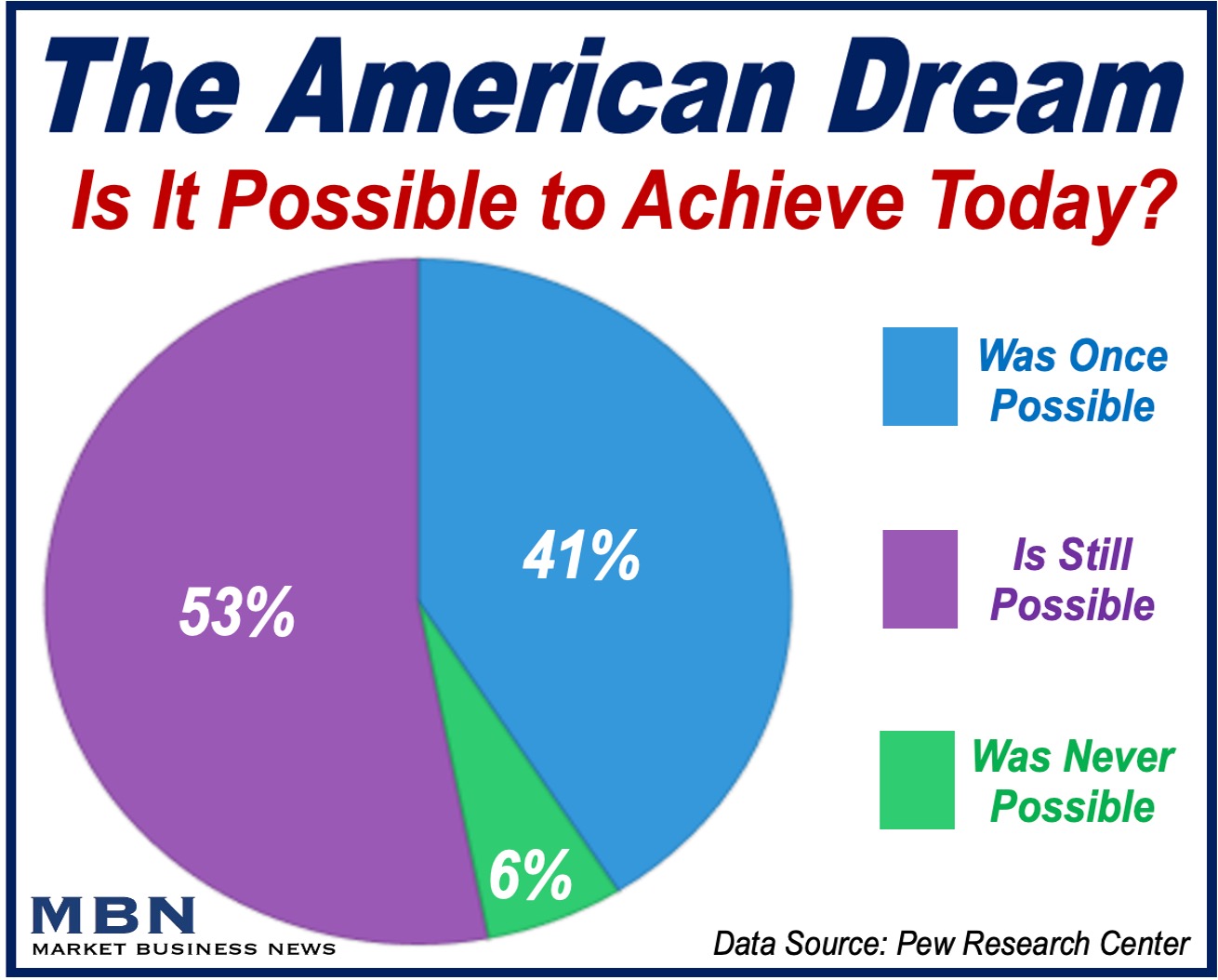The American Dream is the belief that if you put in the effort and stay determined, you can succeed in the United States no matter where you come from. The phrase appears in movies, TV shows, newspapers, and political speeches, and people worldwide often see it as a sign of hope and new possibilities.
It is a concept that has been woven into American culture, and most people worldwide have heard the term, either in English or translated into their own language, as a symbol of opportunity and success.
The concept has deep roots in American culture. Many people around the globe recognize it, either in its English form or in translation, as a sign of possibility and success. Gabriel Borelli from the Pew Research Center has described it as a phrase going back over a hundred years, emphasizing the idea that effort and resolve can lead to prosperity. He has also pointed out that about half of Americans still feel this goal is within reach.
The Foundations of The American Dream
The American Dream has long been seen as a key principle in the United States. At its heart, it is about the belief that everyone deserves a fair chance to work toward their goals and improve their lives. It represents a national ethos that has shaped the cultural and political identity of the country for hundreds of years.
Rooted in the U.S. Declaration of Independence, the dream hinges on the idea that “all men are created equal” and that each has the right to “life, liberty, and the pursuit of happiness.”
However, over time, the meaning of The American Dream has evolved significantly. Originally, it was simply about having an equal shot at success. Over time, it grew to include aims like homeownership, financial security, and the hope of moving up in society.

Historical Evolution: Shaping The American Dream
Colonial & Frontier Experience
Historically, The American Dream emerged from the colonial and frontier experience, where Americans believed that unexplored lands and vast resources could provide endless opportunities for success.
This notion was embodied by figures such as John Murray, who in 1774 remarked that Americans were always in search of better lands, even if they had already settled in seemingly ideal locations.
19th Century – Immigration from Europe
The dream took on new dimensions during the 19th century, particularly with the mass immigration waves from Europe.
For many immigrants, the United States represented a place free of the rigid class structures that dominated Europe. In America, social mobility and political freedoms were seen as accessible through personal effort.
This was further cemented by the California Gold Rush, where the belief in instant wealth became a defining aspect of the American psyche.
20th Century – The Phrase Becomes Official
The 20th century marked the formalization of the term “American Dream.” Historian James Truslow Adams popularized the phrase in his 1931 book Epic of America.
He described The American Dream as more than material success. It was about a vision of social order, where everyone could achieve their fullest potential, regardless of the circumstances of their birth.

Adams emphasized that the dream was not merely about wealth but about an inclusive society where individual talents and perseverance were valued.
The Role of Materialism and Social Order in The American Dream
Economic Success
Although Adams highlighted that it wasn’t purely about money, many have linked The American Dream with earning enough to buy a home and achieve other financial milestones. Political campaigns sometimes used slogans that encouraged this view. For example, in a 1928 advertisement for Herbert Hoover’s presidential campaign, the phrase “a chicken in every pot and a car in every garage” was used to promise widespread prosperity.
This slogan is an example of how The American Dream was often seen in materialistic terms, symbolizing the belief that economic success and consumer goods were key markers of a better life.
Social Equality and Justice
Alongside this material focus, The American Dream has also retained its roots in social equality and justice.
This aspect of the dream was notably highlighted during the civil rights movement of the 1960s.
Martin Luther King Jr., in his famous “I Have a Dream” speech, connected the African American struggle for equality to the broader American Dream, calling for a nation where individuals were judged by the “content of their character” rather than the color of their skin.
Social Mobility – a Shifting Reality
While The American Dream has long been associated with the belief in *social mobility, data from recent decades suggests that *upward mobility is becoming increasingly difficult to achieve.
* ‘Social Mobility’ refers to the ability of individuals or groups to move up or down the social and economic hierarchy (socioeconomically), often across generations. ‘Upward Mobility’ means rising socioeconomically, typically through improved income, education, or occupation.
Studies indicate that the United States now lags behind many European countries in terms of social mobility. For example, the U.S. ranked 27th in the 2020 Global Social Mobility Index.
This decline in mobility has been accompanied by a rise in income inequality, challenging the core promise of The American Dream that hard work will lead to success.
Belief in The Dream Continues
Despite these challenges, surveys show that many Americans continue to believe in the attainability of the dream, although with varying levels of optimism.
According to a 2024 Pew Research poll, 53% of Americans still believe The American Dream is attainable for them, while 46% do not.

However, belief in the dream is not uniform across different demographic groups. Younger generations, African Americans, and Asian Americans tend to be more skeptical of the dream’s attainability than older, white Americans.
Differing perspectives
A survey of 8,709 adults in the United States finds that people hold mixed views on whether success is still within reach. About half (53%) say the dream remains possible. In contrast, 41% feel it was an option in the past but isn’t anymore, and 6% believe it never applied.
Older vs. Younger Adults
Age is a major factor in these opinions. Roughly two-thirds of those aged 65 and older (68%) say the American Dream is still possible, and 61% of those aged 50 to 64 agree. But among adults under 50, this figure drops to around four-in-ten (42%).
Higher vs. Lower Income
Income also plays a big part. About 64% of those in the upper-income tier believe the American Dream is still possible, compared with 56% in the middle-income group and just 39% in the lower-income bracket.
Race and Ethnicity
Across racial and ethnic groups, roughly half say the dream can still be achieved. While only 6% overall say it was never possible, about 11% of Black adults hold this view—nearly double the share among other groups.
Political Views
Party affiliation makes a difference, though not a large one. Slightly more Republicans and Republican-leaning adults (56%) than Democrats and Democratic leaners (50%) say the dream is still within reach.
Educational Background
Among those with a bachelor’s degree or higher, 57% say the dream continues to be possible. That figure is 50% among adults with less education.
Age and Income Differences Within Each Party
Even when sorted by party, older and higher-income adults are more likely to say the dream is alive, while younger and lower-income adults are less likely to share that outlook. In both parties, there is about a 25-point gap between higher- and lower-income individuals.
Personal Attainment: Have People Achieved It?
Americans are almost evenly split over whether they think they have personally achieved the dream, are on the way, or see it as unreachable. Around 31% say they have attained it, 36% feel they are heading that direction, and 30% believe it is out of their grasp.
Race and Ethnicity
White adults (39%) are more likely than Black (15%) and Hispanic (19%) adults, and roughly as likely as Asian adults (34%), to say they have already fulfilled the dream. Meanwhile, nearly half of Black (48%), Hispanic (47%), and Asian adults (46%) feel they are on their way, compared with 29% of White adults who say the same.
Political Leanings
Among Republicans, 38% report having reached the dream, compared with 28% of Democrats. On the other hand, Democrats are slightly more likely than Republicans to feel they are making progress (38% vs. 34%). More Democrats than Republicans say the dream is personally beyond reach.
Income and Age
Higher-income individuals and older adults are significantly more likely to say they have already accomplished, or are close to accomplishing, the dream than younger and less wealthy Americans. These differences match the broader patterns for belief in the dream itself.
Economic Challenges and Disillusionment
The economic challenges that have led to increasing disillusionment with The American Dream are numerous.
Owning a Home
Owning a house has long been seen as a key goal in The American Dream, yet prices have climbed to levels that put it out of reach for many. At the same time, wages for large segments of the workforce have barely grown, and living costs, such as education and healthcare, keep rising.
Wages, Education, and Healthcare
At the same time, wages have stagnated for much of the working class, while the cost of education and healthcare has risen.
These factors have led many to question whether the traditional vision of The American Dream, with its promise of material prosperity, is still realistic in today’s economy.
Wealth Gap
Another source of concern is the growing gap between those who have a great deal of money and those who do not. Experts like Joseph Stiglitz have noted that economic inequality in the U.S. ranks high compared to other advanced countries. There is also a difference between wealth (the assets people own) and income (what they earn). Many argue that these gaps make it harder for people from less fortunate backgrounds to gain a foothold.
The Future of The American Dream
As The American Dream continues to evolve, it is becoming clear that its meaning has expanded beyond the material aspirations that once defined it.
Increasingly, people are redefining the dream in personal terms. For some, it is about finding happiness and fulfillment, while for others, it is about achieving financial security or raising a family.
According to a 2023 private survey, modern Americans now place more value on personal well-being, such as secure retirement and financial independence, than on material symbols like large homes or expensive cars.
Ultimately, The American Dream remains a powerful symbol of opportunity and aspiration, but it is also a concept that is deeply affected by economic realities and cultural shifts.
While it continues to inspire people both in the United States and around the world, its traditional promise of financial success through hard work is increasingly being questioned.
